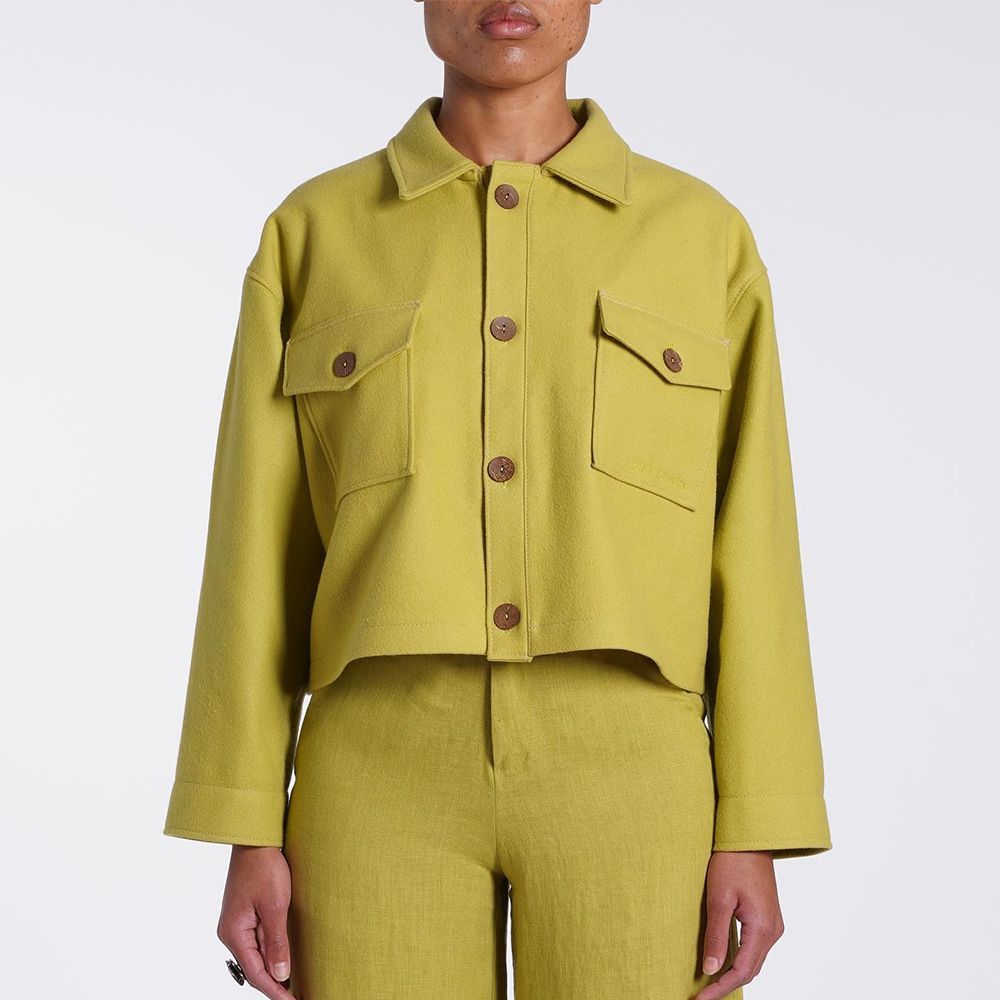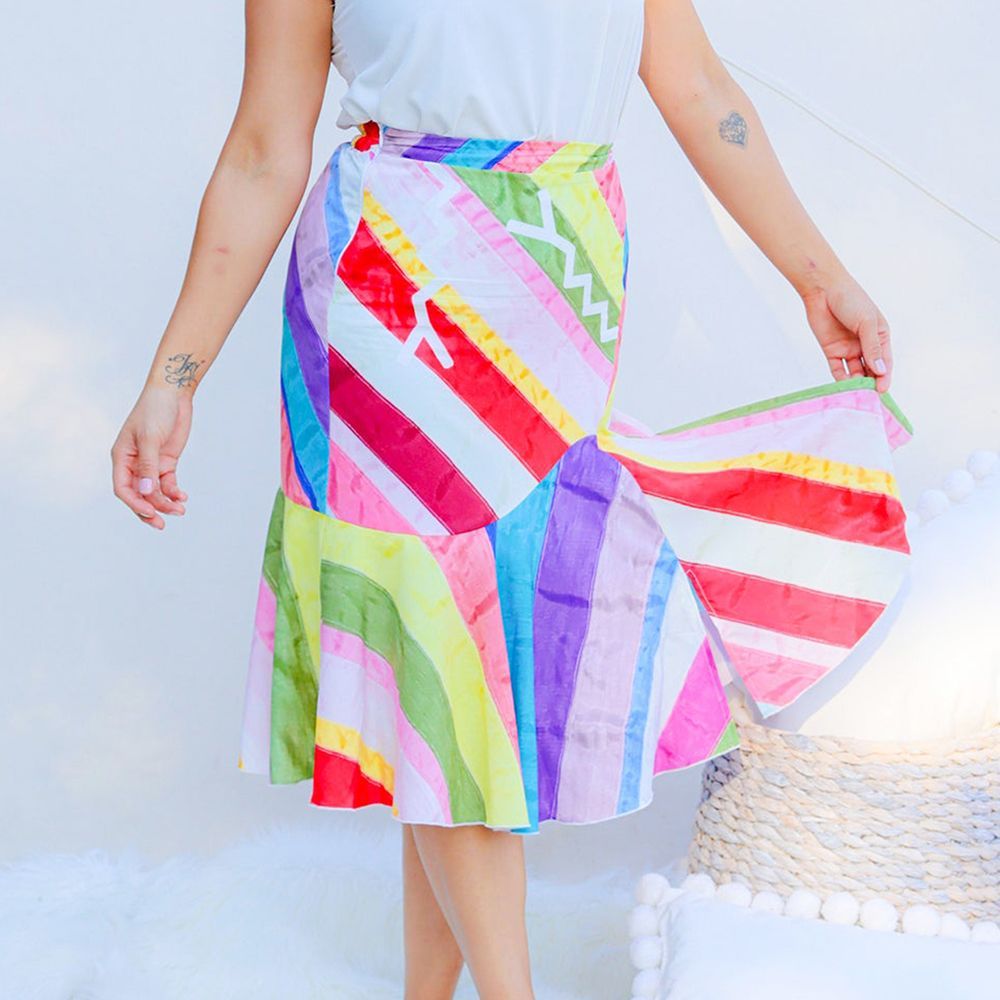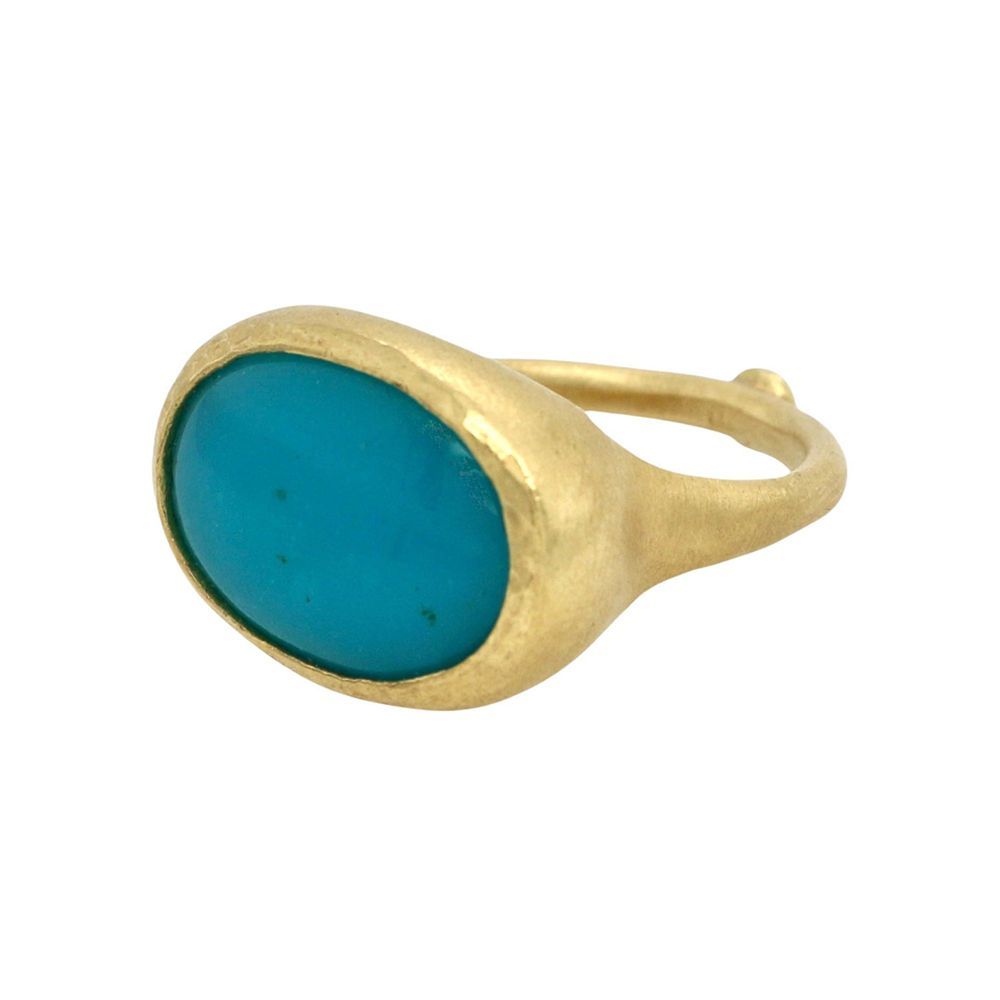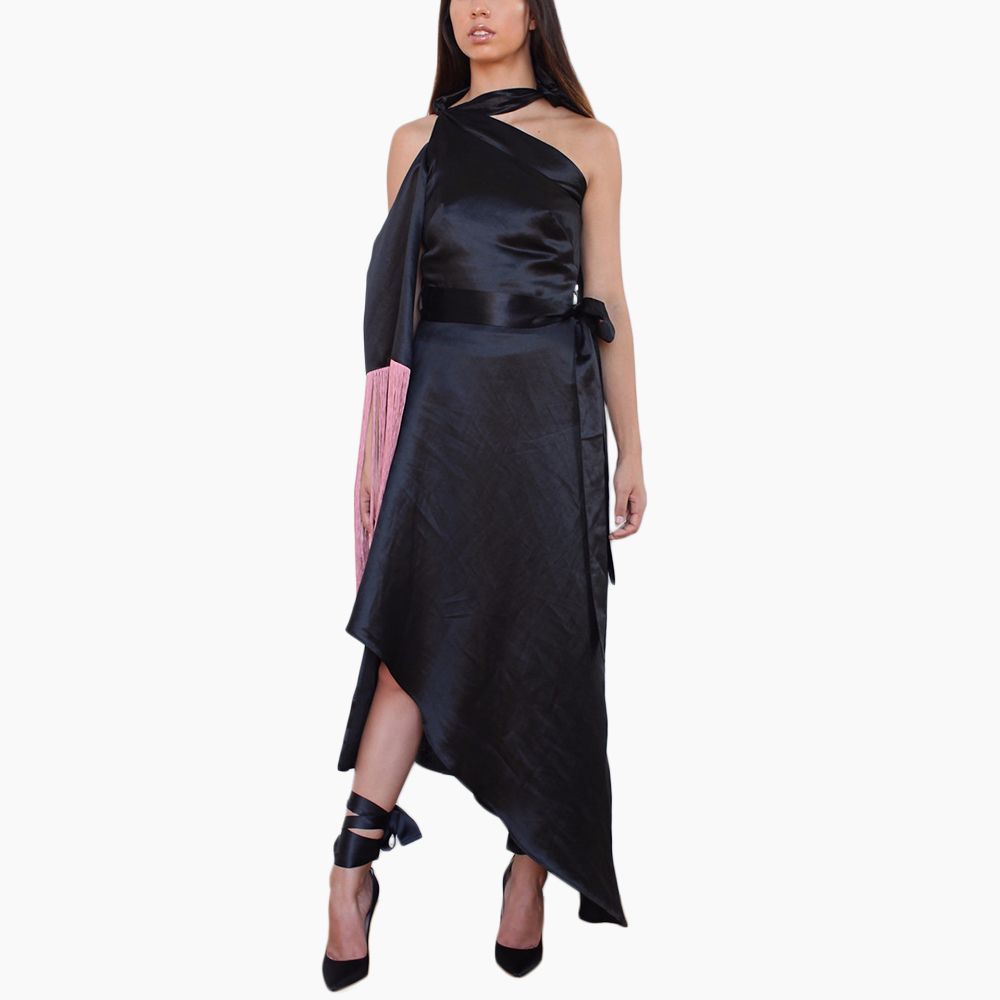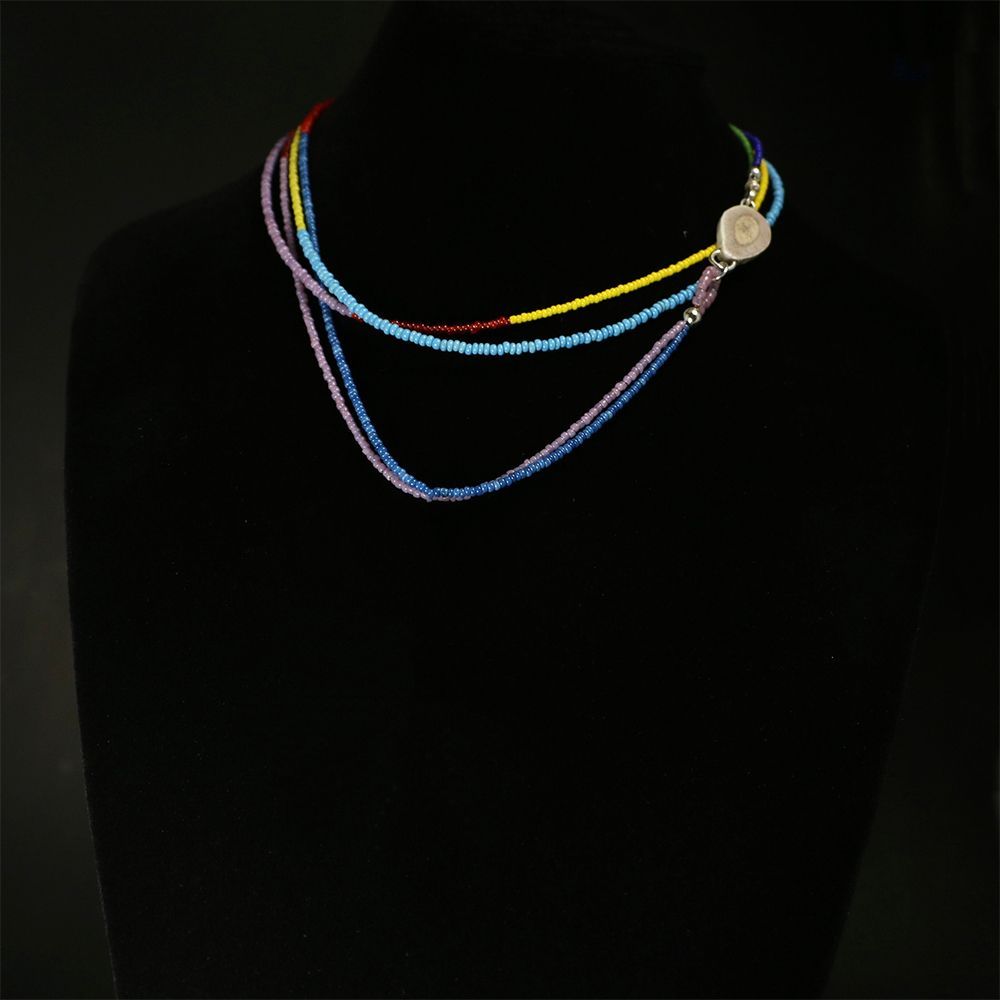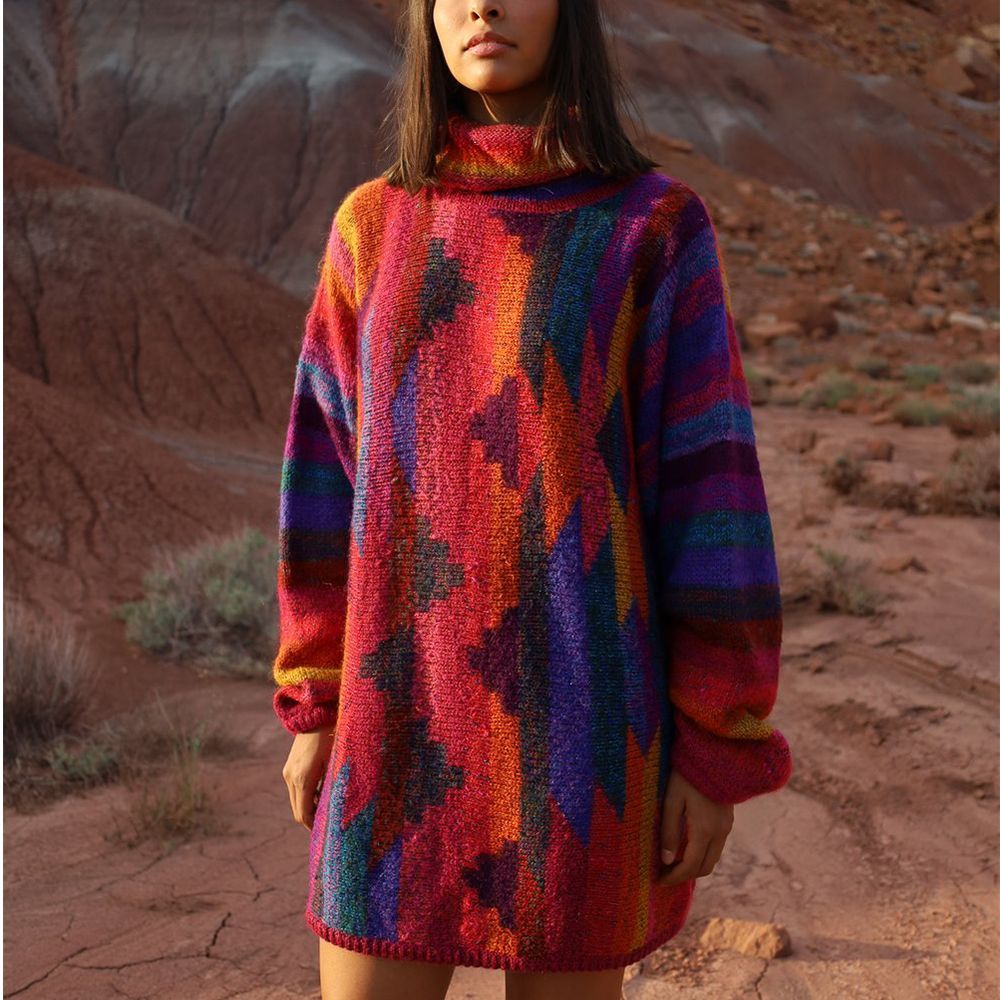Products You May Like
This month, we celebrate and honor Native American people and commemorate their histories and cultures. But the time to support Indigenous artists is all year round. Sustainability and tradition are often at the forefront of Indigenous design, whether it’s the way Keri Ataumbi uses visual storytelling in her jewelry or the history behind Jamie Gentry’s bespoke moccasin boutique. By uplifting Indigenous, Native American, and First Nation-owned brands, you help grow small business, spread inclusivity, and encourage authentic art. Here are eight designers to support this Indigenous Peoples’ Day—and always.
Korina Emmerich
Korina Emmerich descends from a long line of Coast Salish Territory fisherman on her father’s side, and her designs for EMME Studio often reflect that legacy. She is known for crafting beautiful jackets and shirts in bright sunset and oceanic colors, and in patterns that pay homage to the sacred relationship between humans and animals. Celebrities and politicians like Deb Haaland have worn Emmerich’s designs, and one of her creations, a wool skirt and coat, was even featured in the Metropolitan Museum of Art’s “In America: A Lexicon of Fashion” exhibit. At the height of the pandemic, Emmerich used her sartorial skills to help her community by crafting hundreds of face masks in traditional patterns and hues. “[Indigenous] masks can carry heavy ceremonial responsibilities in recovery and healing,” Emmerich told ELLE at the time. “Everything created is meant to be used and masks help share traditional teachings in a sort of theatrical way.”
Lauren Good Day
Lauren Good Day, an Arikara-Hidatsa-Blackfeet-Plains-Cree designer, learned beadwork from her mother as a child. She then took that passion for art and traditional design and incorporated it into her eponymous contemporary clothing brand, which is known worldwide for its bright unisex graphic tees, hoodies, and pants. Her latest collection honors the “aesthetic of the flourishing Northern Plains” and features traditional floral and elk patterns in bright colors.
Keri Ataumbi
Growing up on the Wind River Reservation in Wyoming, Keri Ataumbi developed a love for contemporary Native American design at an early age. The Kiowa fine jeweler categorizes her work as “wearable art,” because it incorporates conceptual narrative and often features juxtaposing materials. “In the Western world, there’s been a real separation in terms of what’s art and what isn’t art,” she said in an interview. “There’s not an integrated feeling about jewelry, that jewelry is actually art and can have all the same stories and potency that a painting does.”
Jamie Okuma
Renowned beadworker Jamie Okuma is thoughtful and eco-conscious when she comes up with her luxury designs—which often incorporate intricate patterns of florals and animals. Okuma—who is Luiseño, Shoshone-Bannock, Wailaki, and Okinawan—keeps production quantity relatively low in order to avoid overstock. “We all have those go-to pieces in our closet that we keep for years and literally wear out before we retire them,” she said in an interview. “I’m here to make the go-tos, the keepers.”
Lesley Hampton
Lesley Hampton, who landed a spot on ELLE Canada’s list of designers to watch, credits her Anishinaabe and Mohawk heritage for shaping her work. Hampton’s sleek designs, which bring to light issues like mental health via phrases and sayings emblazoned on them, have been spotted on runways and red carpets (Lizzo is a fan). But that’s not why Hampton got into fashion. “I’ve been doing a lot of growing up and discovering my Indigeneity,” she told ELLE Canada. “I use the collection as a catalyst for figuring out my identity. Being able to present that with beautiful garments on the runway is just a bonus.”
Jamie Gentry
Jamie Gentry is from the Kwakwaka’wakw Nation, and grew up immersed in a world full of traditional culture and art—particularly sewing, beading, and weaving. She took that deep-rooted passion for all things handmade and turned it into a bona fide bespoke moccasin-making business. Each pair is custom-made and, Gentry says on her site, says “infused with love.”
Tania Larsson
As a teenager, Tania Larsson immersed herself in her Gwich’in culture—teaching herself how to make traditional jewelry and beaded garments. She found a mentor in Ataumbi, featured above on this list. After apprenticing under the designer for two years, Larsson began making her own beautiful jewelry under her brand Gwich’in Fine Jewellery, which she described in an interview as “a conduit that creates connections between the land, animals, elders, hunters, community members, and the wearer.”
Amy Denet Deal
Fast fashion didn’t suit artistic designer Amy Denet Deal. So in 2018, she left her corporate fashion job in Los Angeles and headed to New Mexico. Inspired by the sense of sustainability of her native Navajo community, Deal launched 4KINSHIP as an “artwear” brand focused on upcycling and producing one-of-a-kind clothing and accessories.
Rose is a Senior Editor at ELLE overseeing features and projects about women’s issues. She is an accomplished and compassionate storyteller and editor who excels in obtaining exclusive interviews and unearthing compelling features.
